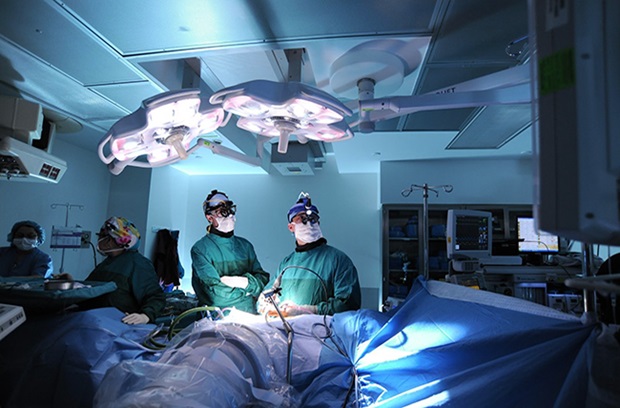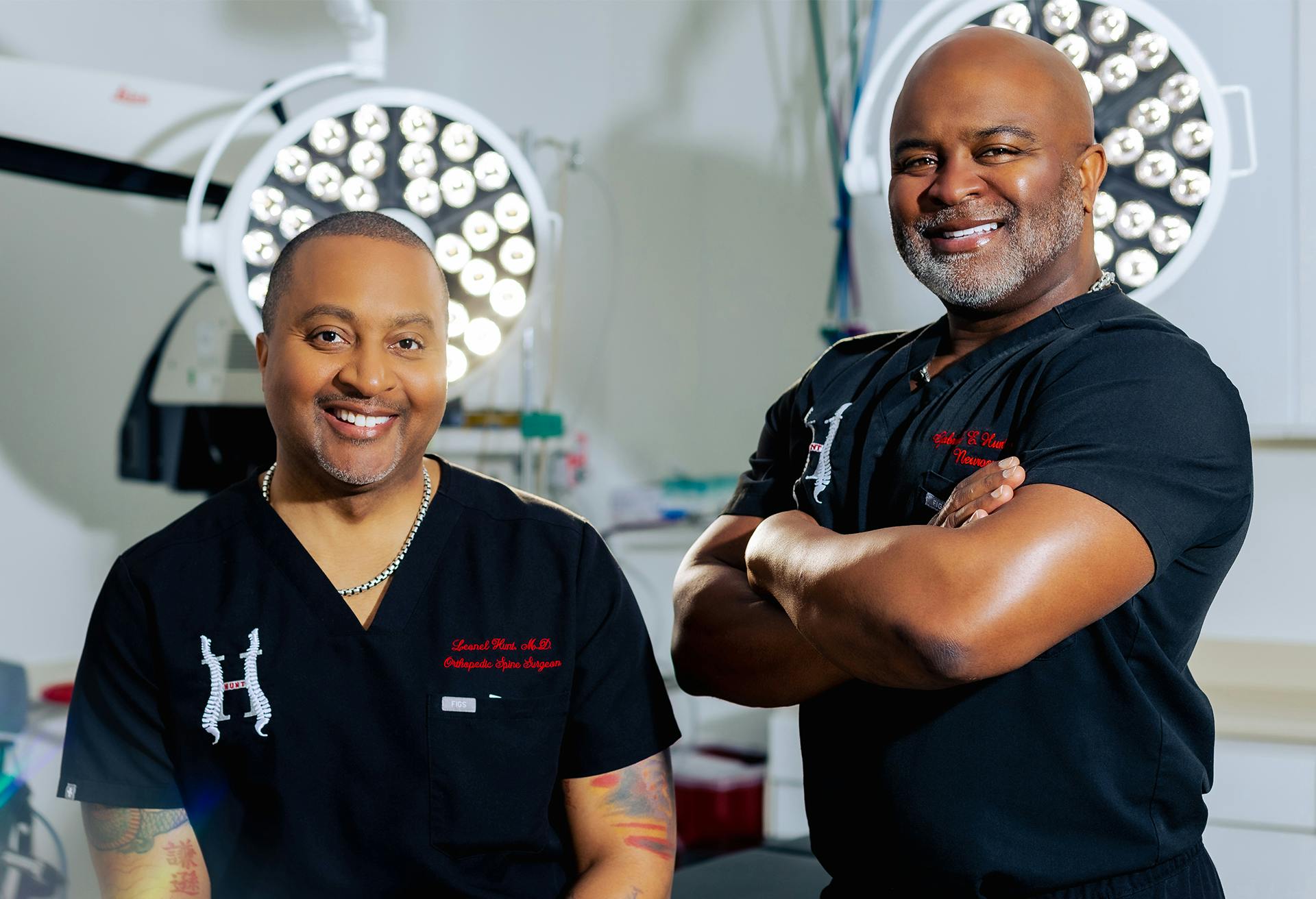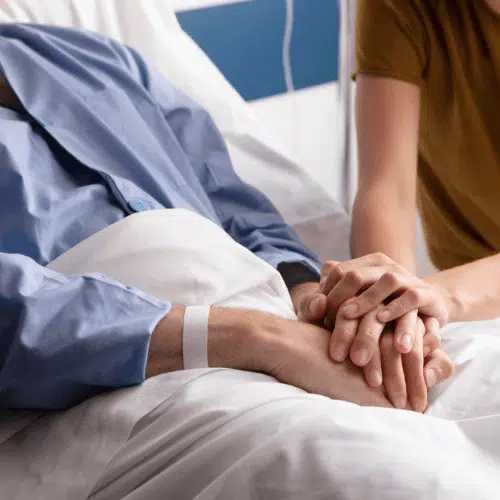Networking with the Best Spine Surgeons in St Louis MO for Comprehensive Care
Networking with the Best Spine Surgeons in St Louis MO for Comprehensive Care
Blog Article
An Introduction of Spine Conditions That Typically Cause Surgical Treatments
Spine problems such as herniated discs, spine constriction, and degenerative disc illness often require medical interventions when conventional treatments fall short to relieve relentless signs. These conditions not only cause significant discomfort but can additionally severely harm everyday performance and total top quality of life. Recognizing the subtleties of each condition and the corresponding surgical options, such as discectomy or spinal blend, is crucial for reliable administration. As we explore these problems even more, it becomes evident that the decision-making process surrounding surgical therapy is complex and warrants mindful consideration.
Herniated Discs
Although many individuals with herniated discs might discover relief via conventional treatments, surgical treatment becomes an essential consideration when signs and symptoms continue or intensify - best spine surgeons in st louis mo. A herniated disc happens when the soft inner gel of a spinal disc protrudes through its outer layer, possibly compressing close-by nerves and leading to pain, feeling numb, or weak point in the extremities
Conventional monitoring commonly includes physical treatment, discomfort medications, and corticosteroid shots, which aim to lower inflammation and boost feature. Nonetheless, in cases where these techniques fail to ease incapacitating signs and symptoms, medical alternatives may be checked out.
The most usual surgery for herniated discs is a discectomy, which involves the removal of the herniated section of the disc to alleviate stress on the influenced nerve origin. In more severe situations, spine blend might be necessary to stabilize the impacted vertebrae.
Individuals are suggested to review the potential risks and benefits of surgical treatment with their medical care copyright to make an informed decision. Ultimately, the goal of any surgical treatment is to recover feature, alleviate discomfort, and boost total lifestyle for people struggling with herniated discs.
Spine Constriction
Spine constriction happens when the areas within the spinal column narrow, resulting in enhanced pressure on the spine and nerves. This problem can create in numerous regions of the spinal column, including the cervical and lumbar locations, often as a result of age-related changes, such as degenerative disc disease, arthritis, or thickening of ligaments.
Individuals with back constriction might provide with signs and symptoms that consist of discomfort, numbness, tingling, or weakness, mainly in the arms or legs. These signs and symptoms can be aggravated by tasks that include standing or strolling, usually leading people to seek alleviation with conservative therapies like physical therapy, medications, or epidural steroid shots.
However, when these non-surgical treatments fail to supply ample relief, medical options might be considered. Usual surgical procedures for back constriction include laminectomy, which entails the elimination of part of the vertebra to ease pressure, and spine fusion, which stabilizes the afflicted location.
Spondylolisthesis
Spondylolisthesis occurs when one vertebra slips forward over another, bring about misalignment of the spinal column. This condition can arise from numerous factors, including congenital address problems, trauma, or degenerative modifications in the spinal column. It is most generally observed in the back area, particularly at the L4-L5 and L5-S1 levels.

Therapy alternatives differ based on the severity of the slippage and the signs and symptoms offered. Conventional steps, consisting of physical treatment, pain management, and task adjustment, are frequently the first line of protection. Nevertheless, when non-surgical techniques stop working to ease signs or when considerable nerve compression is present, medical treatment may be required. Surgical options can consist of back combination or decompression procedures, targeted at recovering alignment and alleviating neurological signs and symptoms. Early diagnosis and ideal management are critical for ideal end results in clients with spondylolisthesis.
Degenerative Disc Illness

People with DDD frequently experience pain that might emit to the arms or legs, depending on the affected region of the spinal column. The problem can be identified through a mix of clinical evaluation, imaging research studies, and person history. Treatment choices commonly begin with conventional measures, consisting of physical treatment, pain monitoring, and way of life adjustments. When these techniques fail to provide adequate relief, medical treatments may be taken into consideration.
Surgical options for DDD might include back combination or synthetic disc substitute, targeted at maintaining the impacted section and alleviating discomfort (best spine surgeons in st louis mo). Ultimately, the option of therapy is individualized, considering the seriousness of the problem, client wellness, and lifestyle aspects
Spinal Growths

Spinal growths can develop from different aspects, consisting of genetic tendency, environmental influences, and pre-existing medical conditions. Patients might offer with an array of signs, consisting of local discomfort, neurological shortages, weak point, or modifications in bowel and bladder function, depending on the lump's size and location.
Surgical intervention might be warranted to ease symptoms, acquire a biopsy, or remove the growth totally. The goal of surgical treatment is often to unwind neural components and stabilize the spinal column. Early discovery and intervention are vital for optimizing results in people with spinal growths.
Verdict
In summary, back conditions such as herniated discs, back stenosis, spondylolisthesis, degenerative disc disease, and back tumors frequently demand medical intervention because of their prospective view publisher site to create significant discomfort and practical problems. While traditional therapies may supply momentary alleviation, medical alternatives become vital when signs and symptoms persist or intensify. Prompt medical diagnosis and intervention play a critical role in bring back function and improving the top quality of life for affected individuals, highlighting the importance of detailed back care.

Report this page